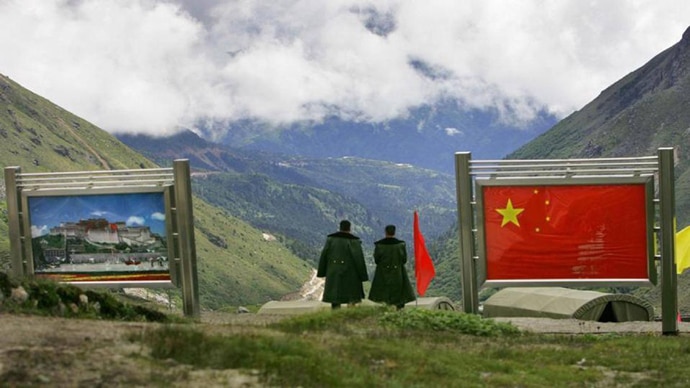How India should deal with China

Even as Prime Minister Narendra Modi was hugging US President Donald Trump in Washington earlier this month, a tense standoff was underway between the armies of two of Asia's major powers - China and India. Two units of the Indian Army and the People's Liberation Army have been at loggerheads at the tri-junction between India, China, and Bhutan since June 16 - the longest border standoff between the two nations in decades. It all started when a PLA unit tried to construct a road towards a Bhutanese army camp in Zomplri area of the Doklam Plateau.
Protest
The Royal Bhutanese Army protested the PLA's construction activities in Doklam, to be supported by the Indian Army two days later. This led to a physical altercation between the two sides, with the Chinese soldiers probably destroying a few temporary bunkers of the Indian Army. Interestingly, unlike in the past, China has taken an unusually aggressive tone in its protests, portraying itself as a victim of Indian aggression.
It upped the ante by asking India to recall the 1962 war and learn a lesson to which New Delhi responded by saying that "India of 2017 is different from India of 1962". Expressing deep concern over China's construction of a road in the disputed area, India had conveyed to Beijing that such an action would represent a significant change of status quo with "serious" security implications for India. For its part, Bhutan has issued a demarche to China over the construction of road and asked Beijing to restore status quo by stopping the building activity.
China has also conveyed to foreign diplomats in Beijing that PLA troops have been patient but will not wait for an indefinite period. As claims and counterclaims fly between Beijing and New Delhi, it is important to underscore that the issue is primarily about China's bullying of a small South Asian nation - Bhutan - by trying to change the facts on the ground. Bhutan has shown the guts to stand up to a behemoth with Indian help. Bhutan shares a unique relationship with India which is largely responsible for its military security.
As per the 2007 India-Bhutan Friendship Treaty, the two nations cooperate "closely with each other on issues relating to their national interests. Neither government shall allow the use of its territory for activities harmful to the national security and interest of the other."
For India, it is important to stand up for one of its closest allies. For China, it is about challenging India's primacy in South Asia and to send a message to other smaller countries that it retains the capability to shape the strategic environment decisively in the region. Moreover, Chinese construction of roads at Doklam has a larger military purpose of getting nearer to the Siliguri corridor so as to be able to cut off India's entire north-eastern part from the mainland should the need arise.

Media
The Chinese media's bellicosity, in this case, has gone overboard. The Global Times is a mouthpiece of the Chinese Communist Party and more often than not reflects the considered view of the policy-makers in Beijing. Yet it is different from the People's Daily which is more of the official government view, thereby allowing it to maintain deniability.
Sections of the Indian media can be equally bellicose but there are always divergences which one can discern. In an authoritarian set up like China, dissident voices will never be part of the dominant narrative, but the Global Times manages to put forth official view using outside "experts".
In foreign policy, in particular, to mark external interlocutors as the source of all domestic trouble comes with high risks, especially in the context of an upcoming Communist Party Congress. But it is precisely such a high risk strategy that makes the Global Times popular and influential. The Chinese media has been upping the ante for some time now.
It has suggested that "China is trying its best to use historical lessons to reason with India and show sincerity in peacefully solving the problem, but if India refuses to listen, then China would have no other choice than to use a military way of solving the problem". The People's Liberation Army also delivered a strong warning to India, calling on the Indian Army to "learn from historical lessons and stop clamouring for war".
Interests
Rather than underlining China's rising power, Beijing's bullying behaviour underscores how rattled it has become of the Modi government's pro-active assertion of Indian interests. Most recently India was one of the few major powers that did not attend the Belt and Road Initiative Summit and has repeatedly underscored the hegemonistic design behind the benign rhetoric.
Growing bonhomie between Modi and Trump is also an unnerving factor for an insecure China. Many in India continue to argue that New Delhi should not provoke China by tilting too close to the US. But Chinese aggressive behaviour is a function of its own rise and its concomitant desire to shape its strategic environment in line with its expanding interests. Appeasing China won't work. After all, tiny Bhutan has done nothing to challenge China's growing pre-eminence.
Its only fault is that it has close ties with India. The Modi government's policy of standing up to China and of working with like-minded countries in the region is the only way for New Delhi to preserve its equities at a time when China's rise is upending a number of assumptions of global politics.
(Courtesy of Mail Today.)

